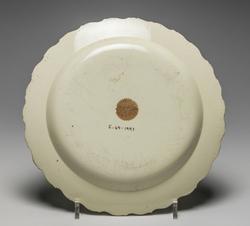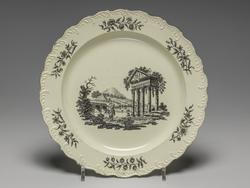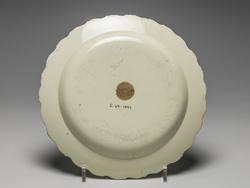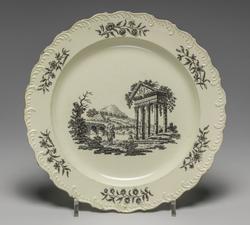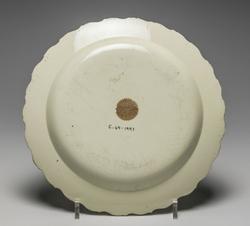Current Location: In storage
Titles
Corinthian Ruins
Maker(s)
Factory:
Wedgwood, Josiah
Printer:
Green, Guy
Designer:
Le Roy, David
Entities
Categories
Description
Cream-coloured earthenware (Queen's ware), moulded, lead-glazed, and printed onglaze in black. Circular with feather edge, sloping rim, shallow curved sides, and flat centre. Decorated in the middle with 'Bridge over the River Ilissus' and the 'Temple of Pola in Istria', and on the rim, with six floral sprays.
Notes
History note: Beard Collection
Legal notes
Given by G.H.W. Rylands, Litt D., CBE, CH in memory of his mother, Betha Wolferstan Rylands
Measurements and weight
Height: 2.3 cm
Width: 24.3 cm
Acquisition and important dates
Method of acquisition: Given
(1997-07-14)
by
Rylands, G.H.W.
Dating
18th Century, third quarter
George III
Circa
1770
-
1775
Note
Made in Josiah Wedgwood's factory at Burslem, or if after 1772, at Etruria, and printed in Liverpool by Guy Green (d. 1799). The feather edge was one of the most popular moulded edgings on plates produced by Wedgwood's and other factories making creamware.
This design was known as 'Corinthian Ruins', but was derived from plate 1 in Robert Sayer's, 'The Ruins of Athens', 1759, with on the left, 'Bridge over the River Ilissus', and on the right, the 'Temple of Pola in Istria'. The description states that 'This temple may be reckoned in Point of Beauty, among the most valuable Remains of Antiquity: . . .'. Sayer reproduced pl. 1 in ' Les Ruines des plus beaux Monumens de la Grèce', Paris 1758, pt. 1, drawn by the French architect, Julien David Le Roy (1724-1803), and etched by Jacques Philippe Le Bas (1707 - 1783). The design occurs on a differently-shaped creamware plate in the British Museum, (1887,0307,1.794), and printed in purple on a plate with a pierced border (1909,1201.453).
School or Style
Rococo
Components of the work
Decoration
Materials used in production
Lead-glaze
Cream-coloured earthenware
Techniques used in production
Moulding
: Cream-coloured earthenware (Queen's ware), moulded, lead-glazed, and printed onglaze in black.
Lead-glazing
Inscription or legends present
Inscription present: circular pale brown label with serrated edge, inscribed in faded black ink
- Text: x\13050\ Choice old\Wedgwood\from Beard\Collection mentioned\in "Chaffers"/Very scarce
- Location: On the base
- Method of creation: Inscribed in faded black ink
- Type: Label
Inscription present: incised circle
- Location: Below centre on the base
- Type: Mark
References and bibliographic entries
Identification numbers
Accession number: C.49-1997
Primary reference Number: 11867
Stable URI
Audit data
Created: Saturday 6 August 2011
Updated: Monday 12 May 2025
Last processed: Tuesday 22 July 2025
Associated departments & institutions
Owner or interested party:
The Fitzwilliam Museum
Associated department:
Applied Arts
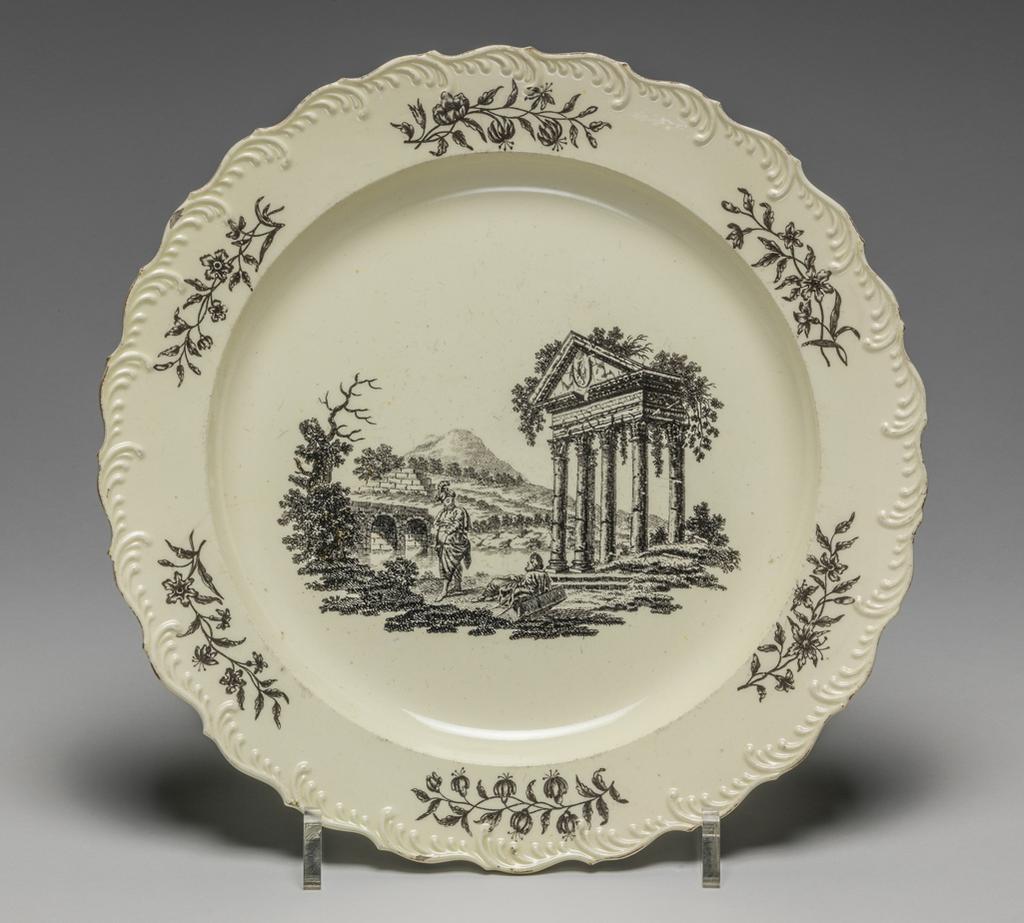
 IIIF Manifest
IIIF Manifest
